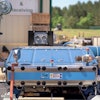
Anyone in the equipment rental business knows that damage is an everyday part of doing business. Yet who’s to blame for that damage? Do you know if the equipment was already damaged, or did it happen while being rented out?
If you’re currently following the typical condition documentation process, you likely can’t answer these questions. You or your team probably perform a walk-around inspection of the equipment, jotting down any noticeable damage on a piece of paper. But those marks can’t fully convey the extent of the damage, or if there are multiple types of damage in a single place. Plus, quick walk-arounds make it easy to miss any existing damage in the first place.
All this documentation uncertainty makes it next to impossible to pinpoint who is at fault when equipment comes back damaged.
The costs of poor documentation
Accepting equipment damage is probably something you have done for years and regard as a cost of doing business. Additionally, most businesses care about customer service. Swallowing a damage expense can seem better than fighting it out with with a long-term customer.
However, taking this approach is hurting your business. Our research shows that damage costs per transaction tend to be .007% of the asset’s market value. For a boom lift worth $174,000, that means losing over $12 for each and every rental. If you process 75 equipment rentals or leasing transactions per month, you just lost $900 during that time, or over $10,000 over the entire year.
Next up is the cost of employees spending time processing damages and damage claims. Employees making $30 per hour in salary and benefits take about 30 minutes on damage issues. If 10% of your transactions have damage issues, that translates to $1.50 worth of personnel time spent on damages for every rental.
And we still have not captured the cost of customer churn due to dissatisfaction. At Record360, our Rental Customer Reports show that nearly 50% of rental customers say they would never do business with a rental company that accused them of causing damage. That means losing half of all the customers you argue with over disputes. That also means losing anyone those customers would have referred to you.
Going digital to cut disputes entirely
All of these costs are racking up because you have poor documentation in place. However, going digital and using software to perform your equipment condition reviews cuts out damage disputes entirely. If you’re ready to make the digital documentation transition, make sure your approach includes the following features:
Photos and video - With nearly everyone having a smartphone, tablet or both, it’s easy to take high-quality photos whenever, wherever you want. Unlike the paper forms you’ve been using, photos capture every nuance of existing damage. They can also prove that the equipment was in excellent condition to begin with. Further, including video as part of your documentation will mean never missing damage again. While the standard visual walk-around inspection can make it easy to walk past damage, walking around a piece of equipment while capturing video means you’ll always be able to look back and see exactly what the equipment looked like.
Time-stamp documentation - You never want to argue over when a picture or video was taken. Making sure your documentation is time stamped removes any uncertainty over when a record took place, making it easy to prove the equipment’s condition before and after it was rented out.
Integrated checklist - Your equipment might come with spare parts or other valuable items you’ll want to keep tabs on. Integrating a checklist into your digital documentation makes it easy for you and your employees to always remember and check on those items.
Email documentation - Share the information you gather with your customers. Showing them how committed you and your team are to capturing high-quality documentation will translate to showing them how committed you are to keeping equipment in great condition.
Rental and leasing companies following these approaches are recovering 60% of the damage costs they used to absorb. Additionally, well-structured digital documentation has allowed them to preserve strong customer relationships. With clear-cut documentation in place, customers are actually accepting of the damage, and readily find ways to cover the costs and come back for repeat business.





















